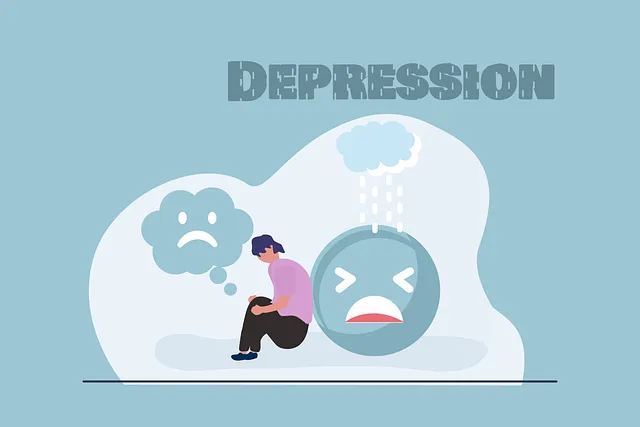Greenwood Village Kaiser Permanente goes beyond traditional healthcare by prioritizing Greenwood Village Kaiser Permanente mental health coverage. Through a multi-faceted approach, they address workplace stressors, reduce stigma, and provide tailored interventions. Their harm minimization strategy uses comprehensive risk assessments to identify individual and environmental risks, integrating trauma support services and community outreach programs. Evidence-based practices like mindfulness, emotional intelligence training, and journaling exercises enhance patient well-being and provider satisfaction. A robust evaluation framework, coupled with continuous improvement initiatives, ensures their mental health coverage remains cutting-edge and impactful for the community.
At Greenwood Village Kaiser Permanente, risk assessment and harm minimization planning are paramount for ensuring patient and staff safety. This comprehensive guide explores crucial aspects of mental health hazard identification within our facility, highlighting the pivotal role of harm minimization strategies. We present a structured, step-by-step approach to planning, emphasizing evidence-based practices that enhance care delivery and improve patient outcomes. Continuous evaluation ensures effective risk management tailored to Greenwood Village Kaiser Permanente’s unique mental health coverage needs.
- Understanding Risk Assessment: Defining Mental Health Hazards at Greenwood Village Kaiser Permanente
- The Role of Harm Minimization: Strategies to Protect Patients and Staff Safety
- Comprehensive Planning for Mental Health Services: A Step-by-Step Approach
- Implementing Evidence-Based Practices: Enhancing Care Delivery and Patient Outcomes
- Continuous Evaluation and Improvement: Ensuring Effective Risk Management in Mental Health Coverage
Understanding Risk Assessment: Defining Mental Health Hazards at Greenwood Village Kaiser Permanente

Greenwood Village Kaiser Permanente takes a proactive approach to mental health risk assessment, recognizing it as an integral part of overall wellness. The organization defines mental health hazards as any potential stressors or challenges that could negatively impact employees’ psychological well-being. This includes work-related stress, burnout, anxiety, and depression, among others. By identifying these hazards, the facility aims to develop tailored strategies for harm minimization, ensuring a supportive and healthy work environment.
One key aspect of their strategy involves implementing Mental Wellness Coaching Programs designed to offer guidance and support to individuals facing mental health challenges. Additionally, effective communication strategies are employed to foster an open dialogue about mental health, reducing stigma and encouraging employees to seek help when needed. Moreover, Crisis Intervention Guidance plays a crucial role in providing immediate assistance during critical situations, ensuring the well-being of every individual within the Greenwood Village Kaiser Permanente community.
The Role of Harm Minimization: Strategies to Protect Patients and Staff Safety

Harm minimization plays a pivotal role in healthcare settings, particularly within mental health facilities like Greenwood Village Kaiser Permanente. It focuses on proactive strategies to ensure patient and staff safety, aiming to prevent harm before it occurs. By implementing comprehensive risk assessment tools, mental health professionals can identify potential hazards and develop tailored interventions. This involves assessing individual patient risks, understanding community-level threats, and considering the impact of environmental factors.
One key strategy is integrating Trauma Support Services, which recognize that many patients carry complex trauma histories. These services provide specialized care, promote resilience building, and offer education to both clients and staff. Additionally, Community Outreach Program Implementation can help identify at-risk individuals early on, offering interventions and resources before crisis points arise. Such proactive measures not only enhance patient outcomes but also foster a supportive environment where staff members are empowered to prioritize safety and well-being for all.
Comprehensive Planning for Mental Health Services: A Step-by-Step Approach

Greenwood Village Kaiser Permanente members can benefit from a structured approach to mental health services planning. Comprehensive risk assessment is the first step, involving identifying potential hazards and their impact on patient well-being. This includes analyzing individual factors, such as personal history and current stressors, as well as environmental influences within the healthcare setting. By understanding these risks, providers can implement tailored harm minimization strategies effectively.
A step-by-step process ensures a holistic view of mental health care. It encourages the integration of self-care practices for healthcare providers to prevent burnout, a common challenge in this field. Additionally, it promotes access to trauma support services, recognizing their significance in addressing complex patient needs. This systematic approach fosters a safer and more supportive environment, ultimately enhancing the quality of care provided by Greenwood Village Kaiser Permanente mental health professionals.
Implementing Evidence-Based Practices: Enhancing Care Delivery and Patient Outcomes

Implementing evidence-based practices is a cornerstone in enhancing care delivery and patient outcomes within mental health services, such as those offered by Greenwood Village Kaiser Permanente. By integrating strategies that have been rigorously tested and proven effective, healthcare providers can offer more tailored and impactful support to their patients. For instance, incorporating Stress Management techniques like mindfulness meditation or Emotional Intelligence training has shown promising results in improving patient well-being.
These practices extend beyond treatment; they empower individuals to actively engage in their mental wellness through Journaling Exercises, fostering self-awareness and coping mechanisms. With guidance from professionals, these evidence-based tools become accessible to a broader range of patients, potentially reducing the burden of mental health issues and improving overall satisfaction with care, as demonstrated by various studies focusing on mental health coverage in diverse communities.
Continuous Evaluation and Improvement: Ensuring Effective Risk Management in Mental Health Coverage

Greenwood Village Kaiser Permanente’s mental health coverage benefits from a robust framework that includes continuous evaluation and improvement processes. This proactive approach ensures that care remains effective, relevant, and beneficial for the community it serves. By regularly assessing patient outcomes, provider feedback, and emerging research, the organization can identify areas of strength and weakness in its mental health services.
This continuous cycle of evaluation enables the integration of innovative practices, such as Trauma Support Services, Mental Wellness Journaling Exercise Guidance, and Stress Management Workshops Organization. Such initiatives are not only responsive to evolving needs but also enhance overall well-being. Regular review allows for data-driven decisions, fostering a culture of improvement that benefits both patients and healthcare providers alike within Greenwood Village Kaiser Permanente’s mental health coverage program.
Greenwood Village Kaiser Permanente’s commitment to comprehensive risk assessment and harm minimization planning is a game-changer for mental health services. By defining hazards, implementing evidence-based practices, and continuously evaluating strategies, the organization ensures patient and staff safety. This step-by-step approach not only enhances care delivery but also improves patient outcomes in Greenwood Village Kaiser Permanente’s mental health coverage, setting a standard of excellence in the industry.






